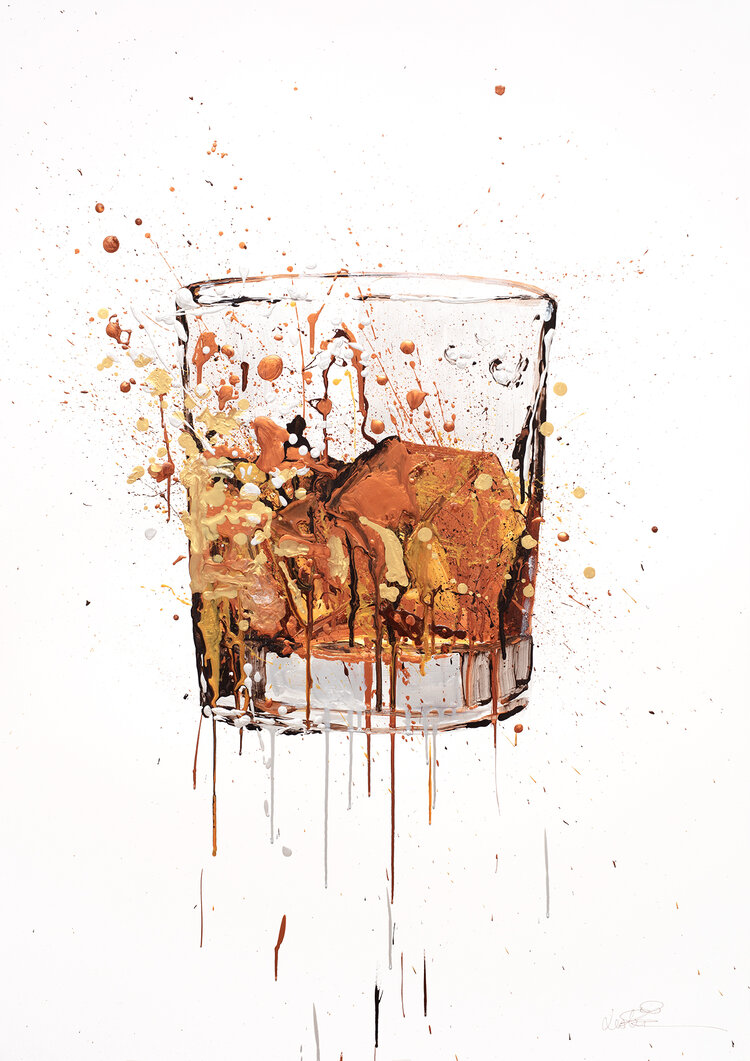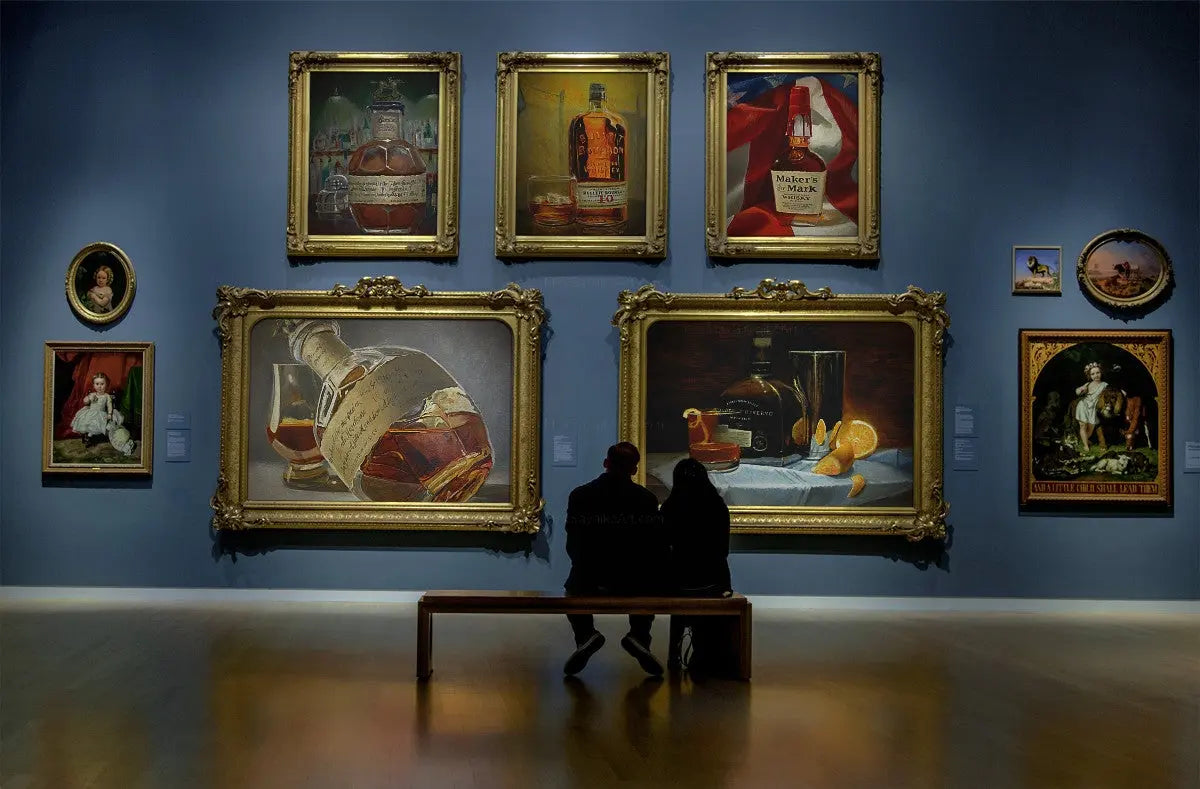Bourbon Art in Contemporary Culture: Where Tradition Meets Development
Bourbon Art in Contemporary Culture: Where Tradition Meets Development
Blog Article
The Value of Whiskey Art in Celebrating Heritage and Craftsmanship in the Beverage Industry
The complex partnership in between scotch art and the party of heritage and craftsmanship within the beverage industry can not be overstated. Via attentively created labels and containers, whiskey brand names envelop their historic roots and the artisanal skills that define their manufacturing techniques. This creative dimension not only enhances market allure however likewise offers as a conduit for social narration, cultivating a deeper link in between the craft and the customer. As we discover the various facets of this subject, fascinating questions regarding the impact of modern patterns on conventional methods develop, motivating additional assessment.
The Historical Roots of Whiskey
At the heart of whiskey's attraction lies a rich tapestry of historic roots that map back to ancient people. The origins of scotch can be connected to the purification methods of the Sumerians and Babylonians around 2000 BCE, where very early forms of fermented grain drinks started to arise. It was in the Center Ages that the art of purification advanced dramatically, particularly in Ireland and Scotland, leading to the creation of whiskey as we recognize it today.
The term "bourbon" itself derives from the Gaelic word "uisce beatha," meaning "water of life." This expression underscores the cultural significance of whiskey in Celtic cultures, where it was frequently related to routines, events, and public bonding. By the 15th century, purification came to be an acknowledged craft within reclusive communities, leading the method for the facility of lawful distilleries.
As trade paths increased, bourbon's appeal expanded, going beyond regional borders and recording the passion of aficionados worldwide. Realism Art. This historical journey shows not just the workmanship behind scotch manufacturing but likewise its important function in social and social contexts, marking it as a significant beverage throughout background
Artistic Expression in Branding
Bourbon branding stands as an engaging junction of creativity and business, where aesthetic identity plays a critical role in forming customer perception. The looks of bourbon tags, packaging, and marketing products mirror not only the brand's tale yet likewise its core values and heritage. Through artistic expression, distilleries communicate a story that reverberates with consumers, evoking emotions and sparking connections.
Making use of shade, typography, and imagery in branding serves to differentiate items in a saturated market. Typical concepts might stimulate a feeling of authenticity and workmanship, while contemporary layouts can indicate innovation and forward-thinking. This calculated imaginative instructions boosts brand name acknowledgment and commitment, allowing customers to forge an individual connection with the whiskey they select.
Additionally, imaginative expression in branding typically functions as a celebration of regional heritage. Distilleries regularly integrate local signs or historic referrals into their layouts, producing a local color that welcomes customers to engage in a more comprehensive social experience. Ultimately, the creativity behind whiskey branding not only enhances aesthetic charm however likewise improves the overall story of the brand, promoting a much deeper admiration for the workmanship and heritage ingrained in each bottle.
Craftsmanship in Container Style
The artistry obvious in scotch branding prolongs beyond aesthetic identification to include the craftsmanship involved in container style. Each container acts as a vessel not simply for the spirit within, yet also for the tale it informs concerning its top quality, origin, and practice. The design process requires meticulous interest to information, as elements such as closure, product, and shape add significantly to the general perception of the scotch.
Workmanship in bottle layout entails choosing high-grade glass that can boost the bourbon's shade and quality, while additionally offering a responsive experience for the consumer. The shape of the container must be both useful and visually appealing, usually showing the heritage of the brand name. Numerous distilleries select unique forms or printed logo designs that evoke a feeling of authenticity and background.
Furthermore, the tag style and typography play a critical function in communicating the brand's narrative. Realism Art. A well-crafted bottle not just captivates the customer's eye but likewise reinforces the brand's dedication to quality and custom. By doing this, the craftsmanship of container design ends up being a vital element of the bourbon experience, merging creativity with an extensive respect for heritage
Social Importance of Scotch Art
Commemorating practice and craftsmanship, the cultural value of scotch art goes beyond simple appearances, intertwining with the social and historical stories of the regions from which it originates. Each container acts as a canvas, showing the special stories, mythology, and practices that have shaped regional whiskey-making practices. The intricate layouts usually show the heritage of the distillers, integrating icons and themes that reverberate with the culture and worths of their areas.

On top of that, bourbon art plays an essential role in common celebrations and celebrations, functioning as a substantial link between people and their shared experiences. By appreciating the virtuosity in scotch packaging, customers grow a deeper understanding and respect for the craft, eventually improving their enjoyment of the beverage itself.
Modern Trends in Scotch Discussion
Over the last few years, the discussion of scotch has actually progressed to reflect modern tastes and trends while still recognizing standard craftsmanship - Limited Edition. Distilleries are significantly concentrating on aesthetic components that boost the total drinking experience, linking the gap in between heritage and modernity
Ingenious container designs have actually emerged, usually incorporating sustainable materials and artistic labels that inform compelling tales. Several brands currently collaborate with neighborhood artists, instilling their items with unique visual expressions that resonate with customers. In addition, limited-edition launches are commonly packaged in collectible containers, including value and allure for lovers.

Verdict
In conclusion, scotch art functions as a crucial avenue for revealing the heritage and craftsmanship fundamental in the beverage market. Via intricate branding, ingenious bottle styles, and culturally considerable creative aspects, scotch brand names successfully honor their customs and get in touch with customers. This creative story not just raises the admiration of scotch yet additionally strengthens area identity and satisfaction among producers. Inevitably, whiskey art plays a crucial function in preserving and commemorating the rich cultural tapestry of whiskey-making.


Craftsmanship in bottle design entails picking high-quality glass that can boost the bourbon's shade and clarity, while likewise supplying a responsive experience for the customer. In this method, the workmanship of container design ends up being a crucial facet of the whiskey experience, combining artistry with a profound respect for heritage.
In conclusion, scotch art offers as a vital channel for revealing the heritage and workmanship integral in the drink sector.
Report this page